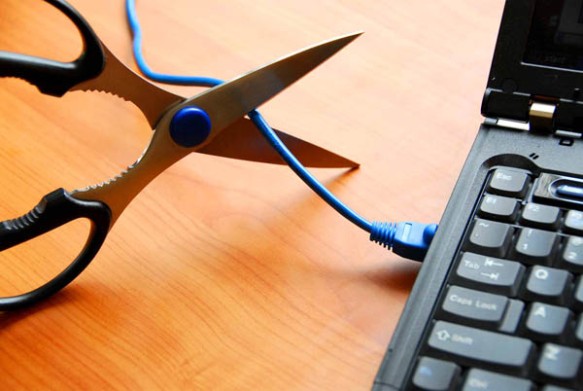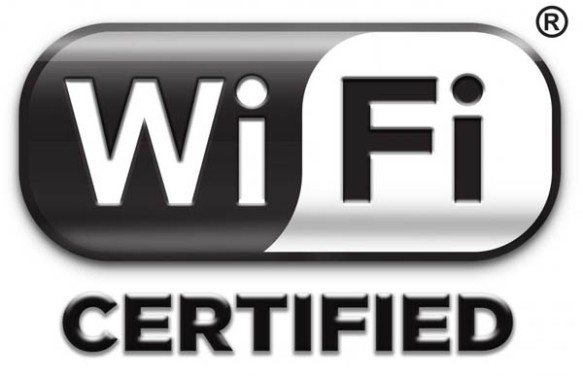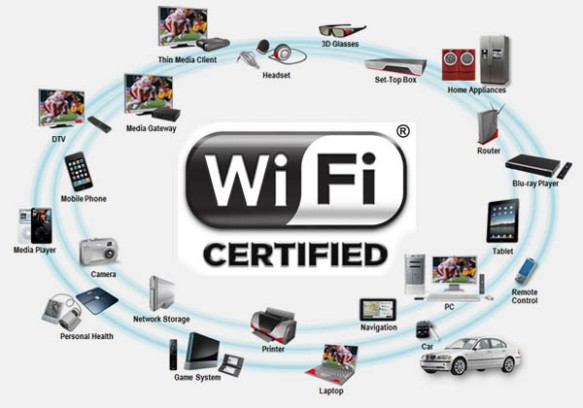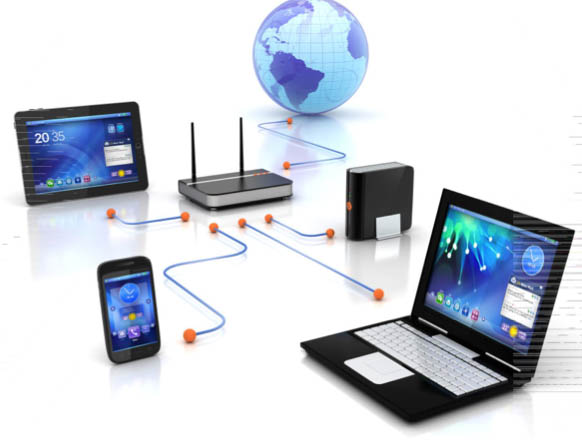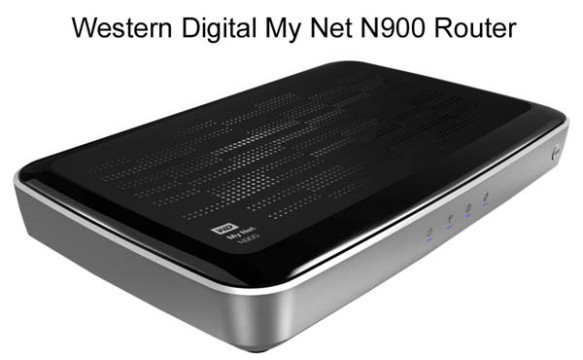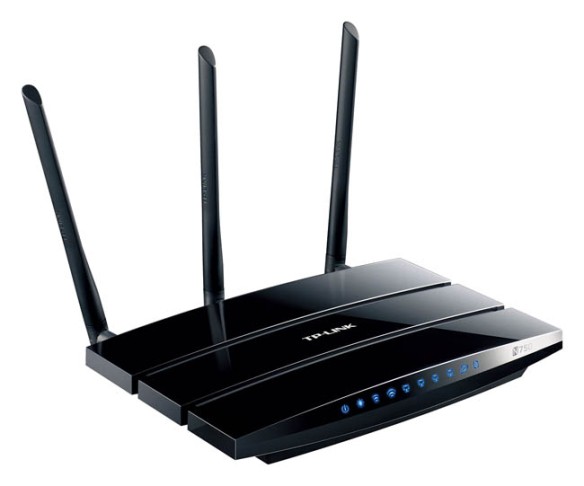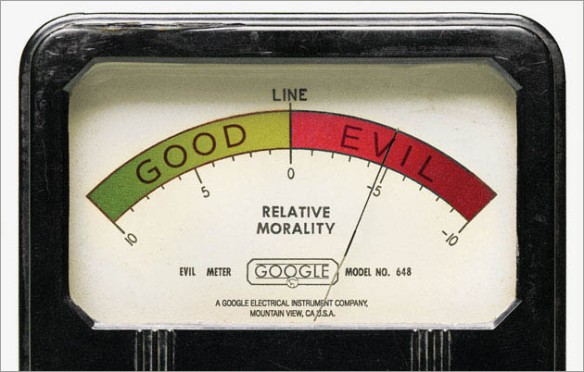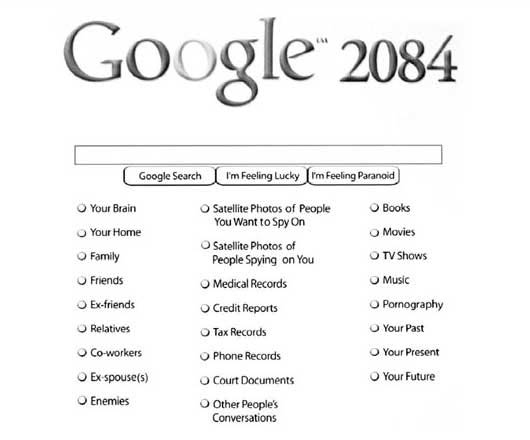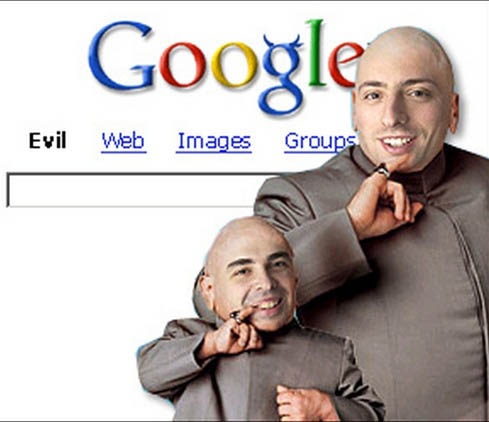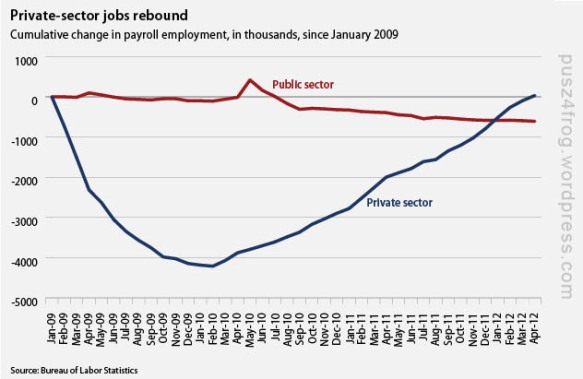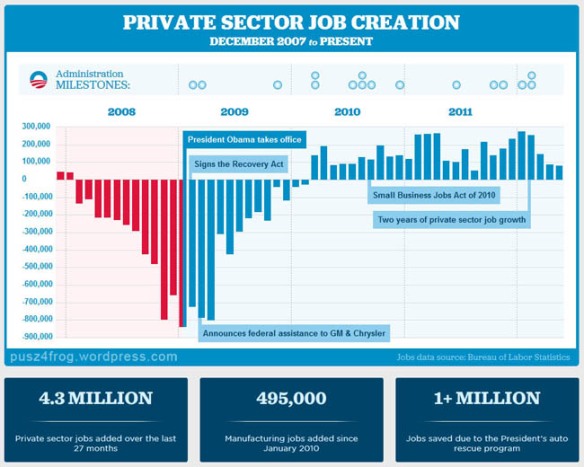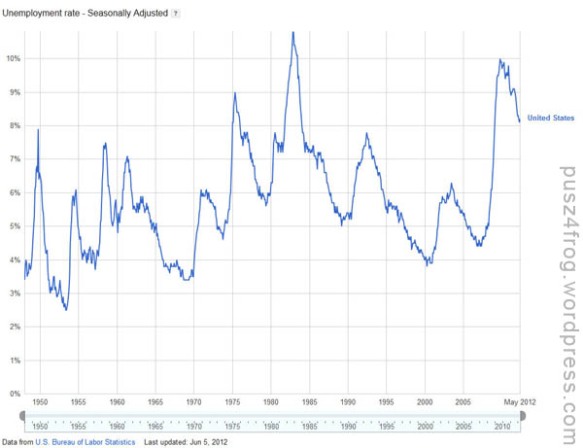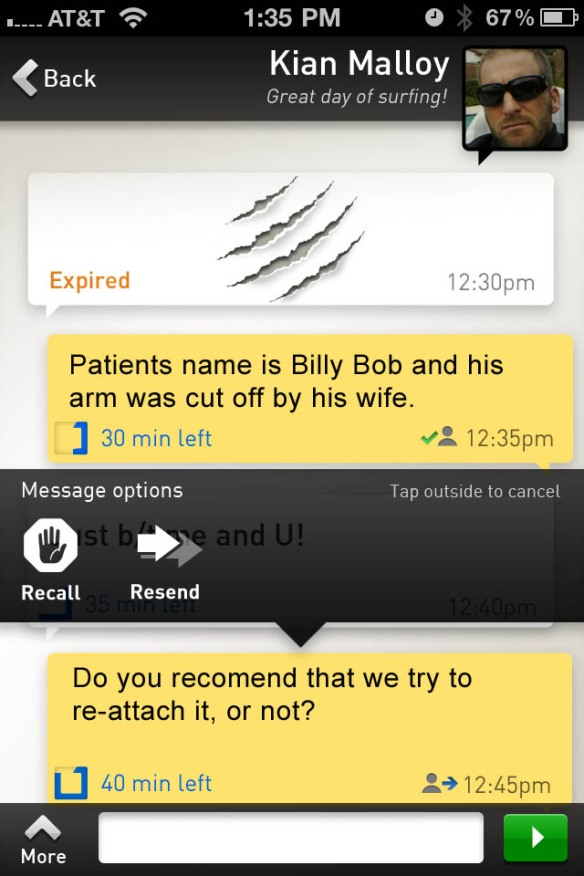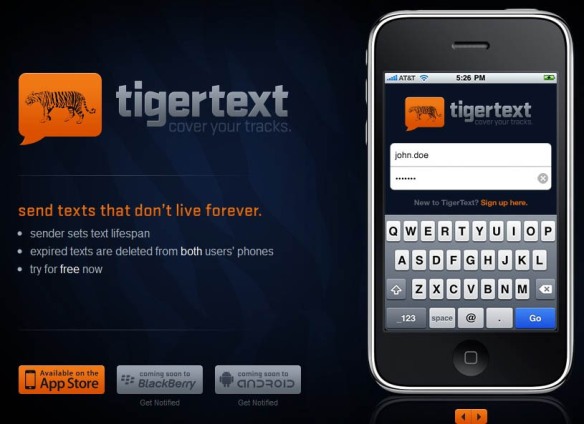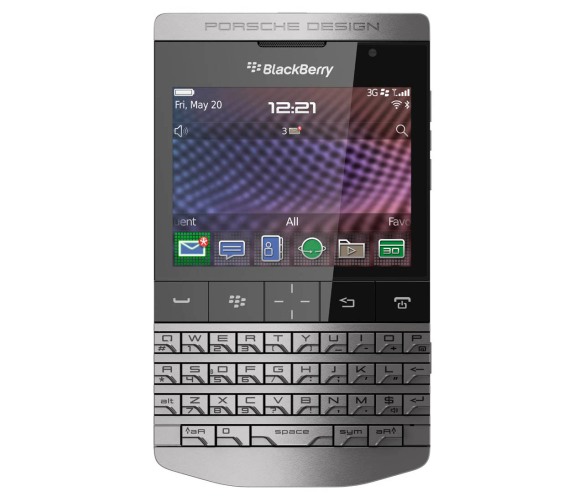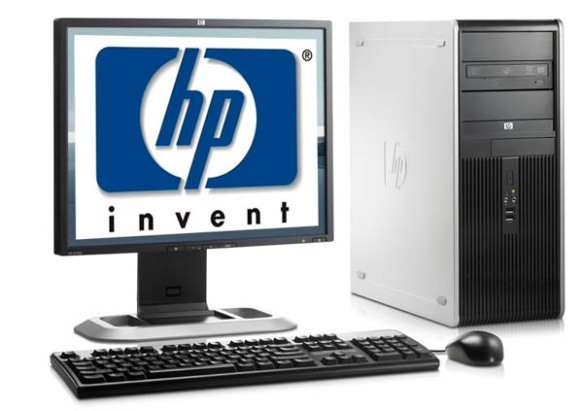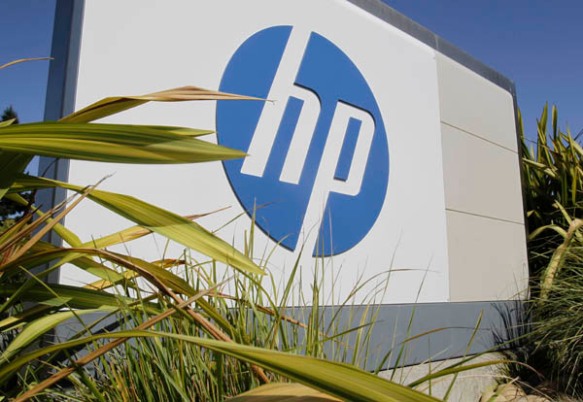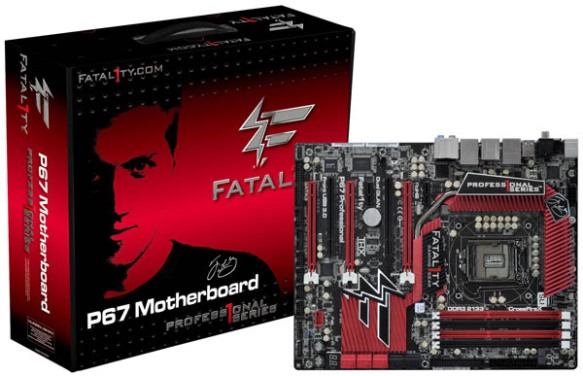
Fatal1ty P67 Professional Gaming Motherboard – ASRock’s Sandy Bridge Monster Ass Kicking Gaming Solution – Let the Fragging Begin!!!
First off, I am not a product tester, and as you can tell from my very random blog, I have written in the past about a few products I liked, as well as sports, gossip, celebrity and other crap.
So, first the disclaimer:
NONE of the parts used in this test were given to me as payment for this review.
NONE of these companies mentioned in this article paid me for the mention of their products or brands.
The only thing I got as compensation for this article – was my cat getting sick and barfing on my new shoes. Damn!!! Yuck!!!!
This blog, and most of my other work is done on a computer. This is the story of that computer.
This article is not just the grand story of my computer’s birth and of the miraculous upgrading process for said computer, but it is also an incredible journal of my virgin experience of actually replacing a motherboard and CPU. Being an end to my virginity, I decided to mark this significant event with a detailed product review of the new Fatal1ty P67 Professional gaming motherboard.
Most product reviews compare one motherboard of a certain chipset or spec, with the same one’s from other motherboard makers. I wanted to find out something different – How did the new board actually improve my system?
I mean, most people upgrading their systems want to know how much of an improvement will they get for the money they spend.
This is the question I wanted to find out with this upgrade process and resulting article. Enjoy.
WHITE BOX
About 6 years ago (OMG, has it really been that long ago?), I got a white box computer that my older brother gave me before he moved out to go to college. It really was a box, which was spray painted white. It was OK. It worked and it was free, what more could I ask for then that? Right?
The first thing I did to the computer was add a Creative Fatal1ty sound card. Actually, my bro came home and I had him help me add the sound card. It was a big improvement over the on-board sound, and I ran it through a small 5.1 receiver that I got for my room. I only had 4 speakers and a bass for it so it is really a 4.1 system, but it really rocked.
4 years ago, I got into Quake and Unreal Tournament, and had to start upgrading my system. My brother visited me again, and I told him I need to upgrade my computer cuz the games I was playing were lagging. We went to Fry’s and ended up getting a Fatal1ty Fp-IN9 Motherboards made by ABIT, and he bought me an Intel Pentium Extreme Edition 955 – 3.46 Ghz CPU to go with it. He is a good brother. Later that weekend, he upgraded the system for me.
The system now had some power and it was a big improvement, but I was still lacking in the graphics card department. On eBay, I was able to snag a used XFX-Fatal1ty 8800GTS which made Quake a hell of a lot more fun!! My bro helped me install it via the phone, and the sound card experience was real all I needed.
I ran this system for a couple of years with no problems till my original Antec PSU crapped out on me. I went on NewEgg and there in the PSU section was a 550W Fatal1ty power supply by OCZ, which I bought as well as upgrading my memory to the OCZ Fatal1ty memory. I figured since I was happy with the Fatal1ty mobo and sound card, how could I go wrong? Turned out I was smart.
So, in a round about way, I kind a ended up with a Fatal1ty computer system. It is funny cuz I didn’t really know Fatal1ty was a 12 time champion gamer, till I got the Fatal1ty motherboard and his story was on it. I am not really interested in competitive gaming, but I like the Fatal1ty brand cuz most of the parts in my system are Fatal1ty brand, and I am quite happy with them.
I use my computer now about 8-10 hours a day, at least 6 days a week. I have not had any hardware problems, with the exception of the Antec PSU, which was 4 years old when it died.
About 6 months ago, I replaced all my hard drives with the following SATA set-up:
One OCZ Agility II 180GB SSD – Windows XP and application drive (Thanx Bro!!)
Two Hitachi 7800 rpm 500 GB hard drives
More then enough storage space for the next decade.
I have NO overclocking on the system.
My bro taught me how to run the 3dMark03 benchmark, so I decide to use it for this article as a measurement test.
The current system produced the following 3DMark scores:
3DMark03 = 33826
3DMark06 = 6548
I don’t know if this is fast, but my system has been super stable and serves me well.
System Specs:
Mobo = ABIT-Fatal1ty Fp-IN9 775 LGA Socket
CPU = Intel Pentium Extreme Edition 955 – 3.46 Ghz
CPU Cooler = Zalman 9500a
Memory = OCZ Fatal1ty DDR2 1066MHz 4 GB Fatal1ty Edition Dual Channel Kit
Graphics = XFX-Fatal1ty 8800GTS – 320 MB – GDDR3 SDRAM
Sound Card = Creative-Fatal1ty Champion Series X-FI
HDD = OCZ Agility II 180GB SSD, 2 x Hitachi 7800 rpm 500 GB hard drives
PSU = OCZ-Fatal1ty 550w Modular PSU
DVD = Memorex Lightscribe DVD-RW
OS = Win XP SP3 – 32 bit
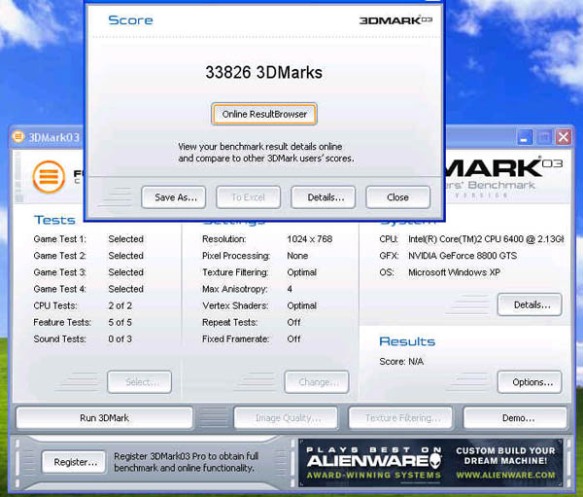
Fatal1ty Fp-In9 WinXP 8800GTS Benchmark 33826
FATAL1TY FANBOYGIRLTHING
A couple of weeks ago, I was talking to my brother, and he asked me how my system was doing? I said fine, runs great and I told him how I had upgraded it and that I even did some benchmarks. He told me that he recently got an Intel Core i7 processor and was really happy with it, and said that for $800 I could really upgrade my system.
The new i5/i7 now comes in an LGA 1155 format (1155 pins = a lot of pins and a new socket format). My bro said that he read about the new P67 chipset motherboards for the LGA 1155 in one of the PC mags. He said I should think about the new Fatal1ty P67 motherboard.
He actually made me a deal – his exact words, “I will be out your way next month, and I will get you an LGA 1155 Socket CPU if got everything else (motherboard and memory)”. Deal!!! I get to see my Bro and get a new CPU!!
So I found the Fatal1ty P67 Professional gaming motherboard review in MaximumPC mag:
http://www.maximumpc.com/article/fatal1ty_p67_professional_review
9 out of 10 – one hot board!!
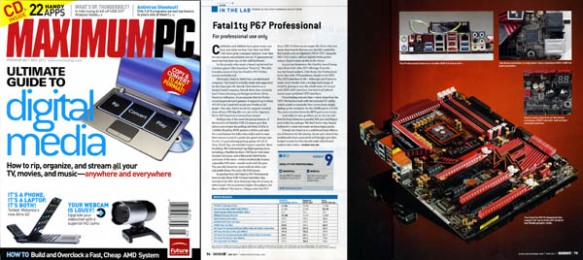
Fatal1ty P67 Professional gaming motherboard review in April 2011 MaximumPC magazine
The Fatal1ty P67 Gaming motherboard is made by the 3rd largest branded motherboard make in the world – ASRock:
http://www.asrock.com/microsite/Fatal1ty/index.asp
I bought one from NewEgg for $249:
http://www.newegg.com/Product/Product.aspx?Item=N82E16813157240&cm_re=fatal1ty-_-13-157-240-_-Product
I was also able to snag 8GB of 10333Mhz DDR3 Fatal1ty OCZ memory (I tried to find the link on NewEgg, but it is not there now, and I have since heard that OCZ got out of the DRAM business to focus on SSD’s – which makes sense).
I paid about $100 for the memory.
I was looking forward to seeing what the new Fatal1ty part could do.
I have been really happy with my past Fatal1ty products; they did what they were supposed to do: (1) last forever, and (2) have great quality for the price. Fatal1ty seems really good at picking the companies who do his products. I don’t know the gamer, but the brand’s products are great – and I guess that is all it takes to build a brand’s loyalty. They certainly got mine.
ASRock is a different story. I liked my ABIT board, but they went out of business. I knew about ASUS and Gigabyte, but ASRock I had never heard of before. I was a little nervous about it, but I figured that all my Fatal1ty product were good, so Fatal1ty would not have some weak company making his products.
I wonder if ASRock knows (at least in my case, and I can’t be the only one), that Fatal1ty gave their company credibility?
A few weeks later, my Bro showed up with an Intel Core i5 ( 2500K @ 3.30Ghz), which he told me he got off of Newegg for about $224 :
http://www.newegg.com/Product/Product.aspx?Item=N82E16819115072&cm_re=intel_core_i5-2500k-_-19-115-072-_-Product
He said that he felt the 2500K offered a great performance/price value and would be a big step up from my old Pentium.
So, the total cost of this upgrade so far, $573.
If I wanted a new system, this price ($570) would get me a Core i3 550(3.20GHz) 4GB DDR3 1TB HDD Capacity ATI Radeon HD 5450 Windows 7 Home Premium 64-bit system:
http://www.newegg.com/Product/Product.aspx?Item=N82E16883227290
I think the potential of the upgrade, is significantly higher then buying a new a Core i3 system with half the RAM and a low end HD5450 graphics card which only has a card benchmark of 306 vs. 863 for the 8800GTS:
http://www.videocardbenchmark.net/
So, I think the upgrade will get me a much faster system for the money, then buying a new system that is already put together.
What I am curious about is how much of a performance increase will I see from my $570 upgrade?
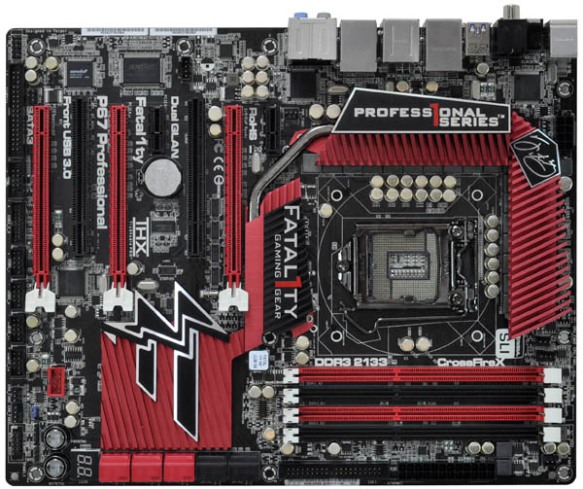
Fatal1ty P67 Professional Gaming Motherboard – Top motherboard view.
LAYING IT OUT
When it arrived at my door, and I ripped open the package, I was quite impressed. The Fatal1ty box looks great, and it well packaged. The Fatal1ty P67 motherboard is one sexy beast!! The red/black coloring is looks really hot, and the logos and other stuff actually looks good – the ‘F’ logo on the lower heatsink is quite classy looking for a motherboard. The look of the board is, well, uh… professional 😉
I recently saw the new Assassin boards from Gigabyte, and they look like a cartoon with fake bullets, cartridges and other gun crap on the board – dumb, but I am sure somebody will buy them. For me, the Fatal1ty P67 Professional motherboard looks much better. Cleaner. More Professional 😉
Top things I liked about the Fatal1ty P67 Professional right out of the box:
1. The Board itself is good looking, and looks/feels of a high quality
2. In the package are lots of high quality SATA3 and USB3 cables
3. The IDE and Floppy cables are high quality, and as a nice touch they have the Fatal1ty ‘F’ logo on them.
4. The board has Power, Reset and CMOS Clear buttons on it, and they are nicely done and make testing and setting up the board much easier.
a. My bro pointed out that the only thing he wished for was that when power was applied to the board, that the power button would light up showing that power was getting from the PSU to the board. Currently, the power button only lights up after you push it, so if you push it and nothing happens, then you have to figure out if power is going to the board from the PSU.
5. This board has plenty of SATA2/3 and USB 2/3 ports, and they are all positioned in an organized and convenient way.
6. The Fatal1ty mouse port is one of the USB 2 ports on the back of the motherboard. It seems that some Professional gamers prefer the older optical/laser mice over the newer mice. The issue is that these older mice have a preset mouse poling rate of 150Mhz. The Fatal1ty mouse port allows the user to set the mouse poling rate up to 1000Mhz for these mice. It is a feature that clearly shows that Fatal1ty had real input into designing the board, because who else would be crazy enough to want that? I use a newer mouse, and I am not a good enough gamer to notice much even if I used an older mouse, but it is nice to know that board really has some Fatal1ty to it.

Fatal1ty P67 Professional IDE Cable

Fatal1ty P67 Professional Rear I/O Panel - Note the Fatal1ty Mouse Port
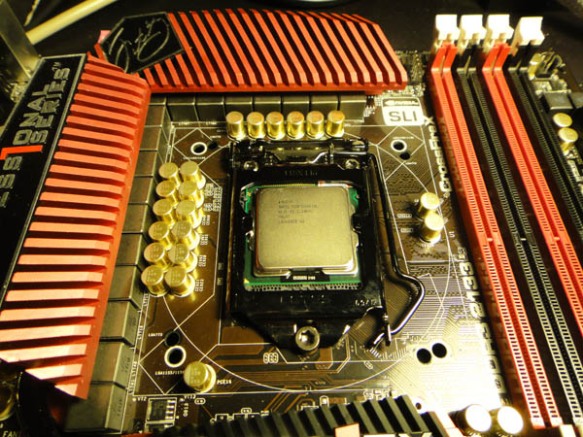
Fatal1ty P67 Professional and my new Intel Core i5 2500K CPU
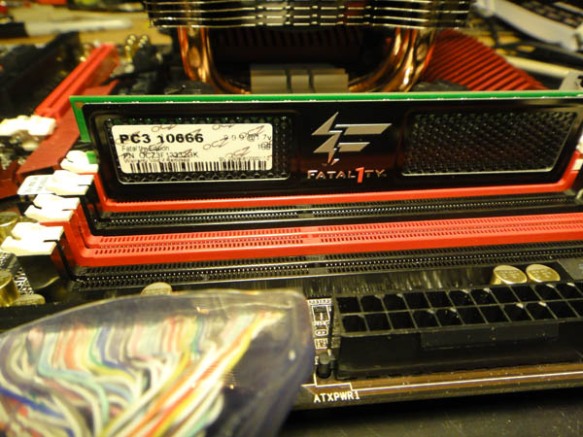
Fatal1ty P67 Professional - The last of the Fatal1ty memory from OCZ
Since we were planning on doing a bunch of Benchmarks to try to see what kind of performance increases we got over my old system, we laid out the motherboard and components on a work bench at a friend’s garage, so that we could change parts easily and work on the system.
The initial set-up is the new motherboard, memory, CPU – and all the old hardware from my old system (Fatal1ty 8800GTS graphics card, Fatal1ty sound card, PSU, SSD, HDD and DVD).
HE’S WATCHING ME
The first thing we did was power up the board.
Now, I have never spend much time using a motherboards BIOS. Actually, I have only really used it with my Bro for an initial setup, but I remember they are very simple and you use the keyboard to navigate around them.
Well, the Fatal1ty P67 comes with a UEFI BIOS, which looks much better, and you use a mouse to navigate it. My bro said that there is not much difference in the sections, items and menu items over a regular BIOS, but to me it is much more user friendly.
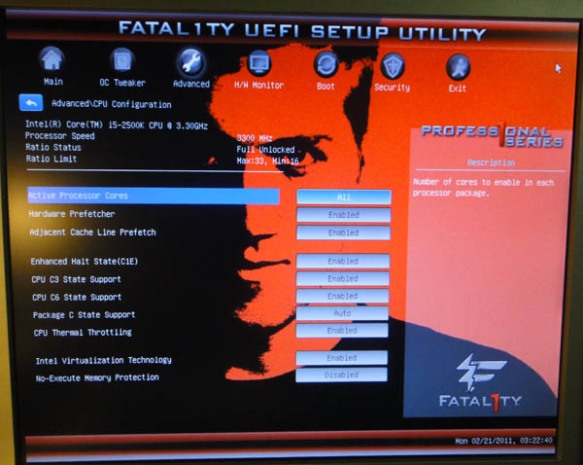
Fatal1ty P67 Professional UEFI BIOS
The graphics are nice, and for the Fatal1ty board it is red with the Fatal1ty face icon/logo, so he is looking at you while you use the UEFI BIOS. I kinda like it, but I could see that some people (mostly straight men who may have competed against him) might not like him staring at you during the few minutes you are using the UEFI.
ASRock might want to have a couple of background options, that the user could switch to, his face, or the Fatal1ty logo or a mix or something.
One thing I did find out about the UEFI – if your Boot HDD is larger than 2 TeraBytes – standard BOIS can’t read them, but the UEFI can read Boot HDD’s as large as 3 TB.
FIRST STOP – SPEEDVILLE
After we got Windows XP SP3 installed, we installed all the drivers and utilities from the disk that came with the Fatal1ty P67 board. The install process was pretty simple, and took about 10 minutes.
Next we installed the graphics drivers and Fatal1ty sound card drivers.
Last we got the 3DMark03 bench mark installed.
We ran the benchmark and got a result of: 41,442
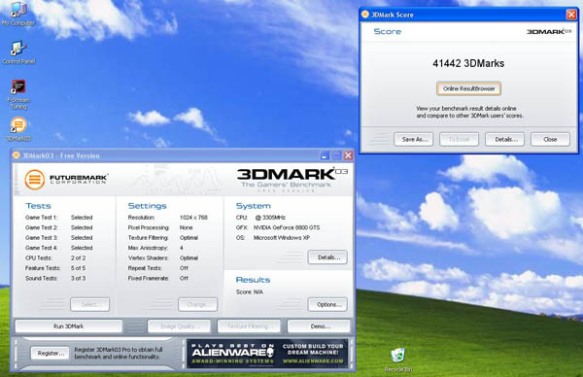
Fatal1ty P67 Benchmark WinXP Drivers 8800GTS - 41442
So, Old mobo, CPU and memory 3DMark03 = 33,330
The New mobo, CPU and memory 3DMark03 = 41,442
This represents a 25% speed increase.
When you consider that 3DMark03 is a graphic card/DX9 benchmark, and I didn’t change the graphics card – a 25% increase is pretty good for just a mobo, CPU and memory upgrade.
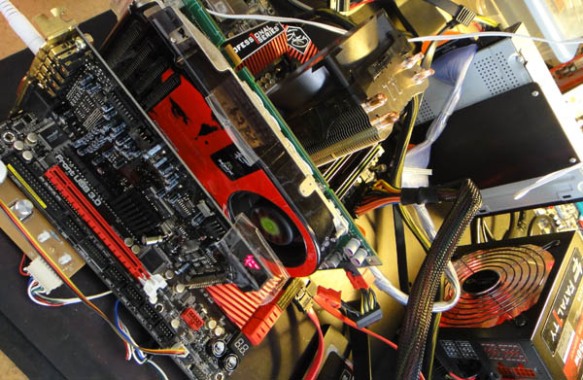
Fatal1ty P67 Professional - Fatal1ty parts and test bench
NUMBER 7, TRACK 64
I was very curious to see what kind of change would occur if we did a new install of Windows 7 – 64 bit, with all the Win7 64 bit drivers. I mean in theory it should run faster than 32bit XP, but I wanted to find out how much faster.
So, we spend a couple hours rebuilding up a hard drive with Win7 64 and drivers.
Fatal1ty P67 – Win XP – 32bit = 41,442
Fatal1ty P67 – Win 7 – 64bit = 60,898
Win 7 64 bit was 50% faster than Win XP 32 bit. Now that is a good increase.
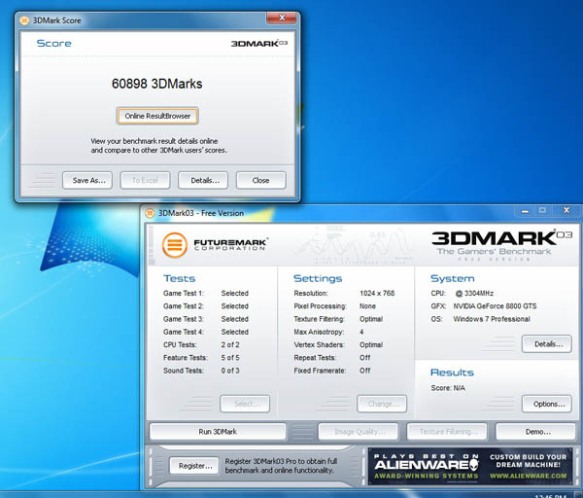
Fatal1ty P67 Benchmark Win7 64 bit Drivers 8800GTS - 60898
TWICE AS FAST
So, by spending $700 for Hardware and Win 7 64 bit, I doubled the speed of my computer.
I looked at what new computers are available for $700, and all I found was on Newegg for $700 was an iBUYPOWER Gamer Power 934i Desktop PC Intel Core i5 2400(3.10GHz) 4GB DDR3 Capacity ATI Radeon HD 5450 Windows 7 Home Premium 64-bit :
http://www.newegg.com/Product/Product.aspx?Item=N82E16883227338
No way that the above system is as fast as my Fatal1ty P67 system upgrade. $700 well spent!!
GOING 4 MORE
I was so happy with my result, that I wanted to get a DX11 graphics card, and wanted to use the newer 3DMark11.
So I got an XFX ATI HD6850:
http://www.newegg.com/Product/Product.aspx?Item=N82E16814150505&cm_re=xfx_hd_6850-_-14-150-505-_-Product
I got it for $150, which brought my total up to $850 for the system upgrade.
Fatal1ty P67 – Win 7 – 64bit – 8800GTS = 60,898
Fatal1ty P67 – Win 7 – 64bit – HD6850 = 71,609
The Graphic card upgrade resulted in a 15% speed increase.
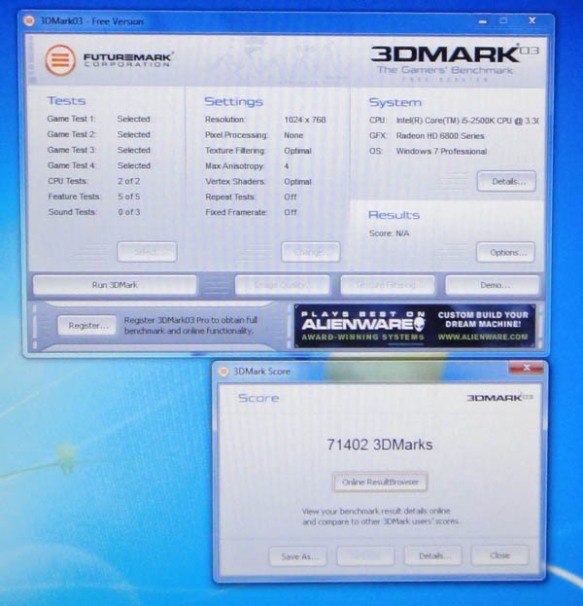
Fatal1ty P67 Benchmark Win7 64 bit Drivers HD6850 - 71420
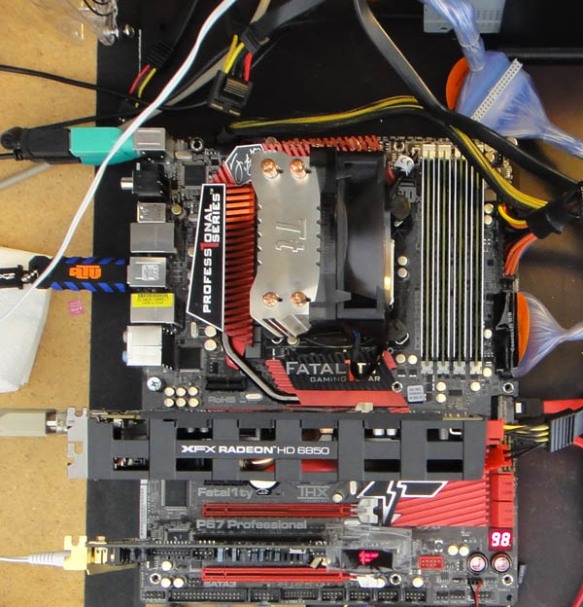
Fatal1ty P67 with HD6850 - Top view
SUMMARY
I am extremely happy with the value, features and performance of the Fatal1ty P67 Professional Gaming motherboard.
I was not so sure of ASRock, but the quality, performance, features and value of the Fatal1ty P67 Professional gaming motherboards – means that I am now a fan of ASRock as well.
I looked at a bunch of P67 motherboards, and the number of features for the price, make the Fatal1ty P67 very competitive.
I love this motherboard!!
Final System Specs:
Mobo = ASRock Fatal1ty P67 Professional 1155 LGA Socket
CPU = Intel Core i5 2500K – 3.3 Ghz
CPU Cooler = Thermaltake
Memory = OCZ Fatal1ty DDR3 10666MHz 8 GB Fatal1ty Edition Dual Channel Kits
Graphics = XFX-HD6850
Sound Card = Creative-Fatal1ty Champion Series X-FI
HDD = OCZ Agility II 180GB SSD, 2 x Hitachi 7800 rpm 500 GB hard drives
PSU = OCZ-Fatal1ty 550w Modular PSU
DVD = Memorex Lightscribe DVD-RW
OS = Win 7 64 Bit
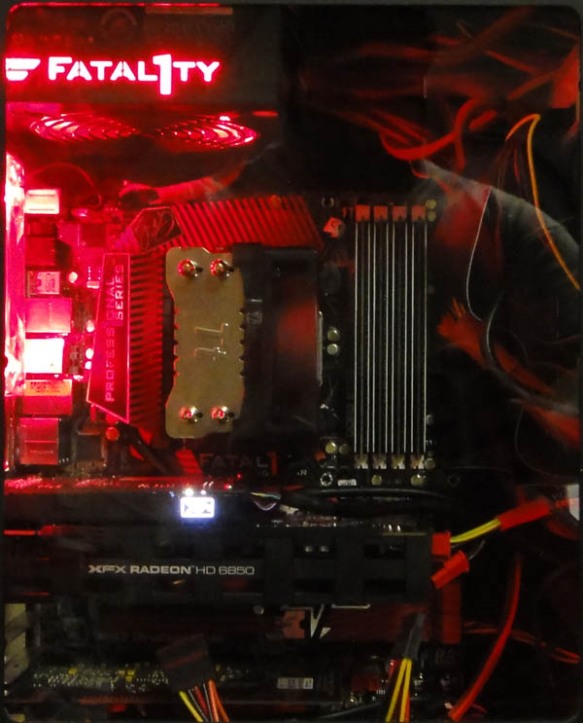
Fatal1ty P67 Professional - The Fraggin' Machine
3DMark03 Benchmarks:
Fatal1ty Fp-In9 – Win XP – 32bit – 8800GTS = 33,330
Fatal1ty P67 – Win 7 – 64bit – HD6850 = 71,609
Total Benchmark increase = 115%
Total Upgrade cost = $850
New CPU, Motherboard, Memory, Graphics Card
3DMark11 Benchmark:
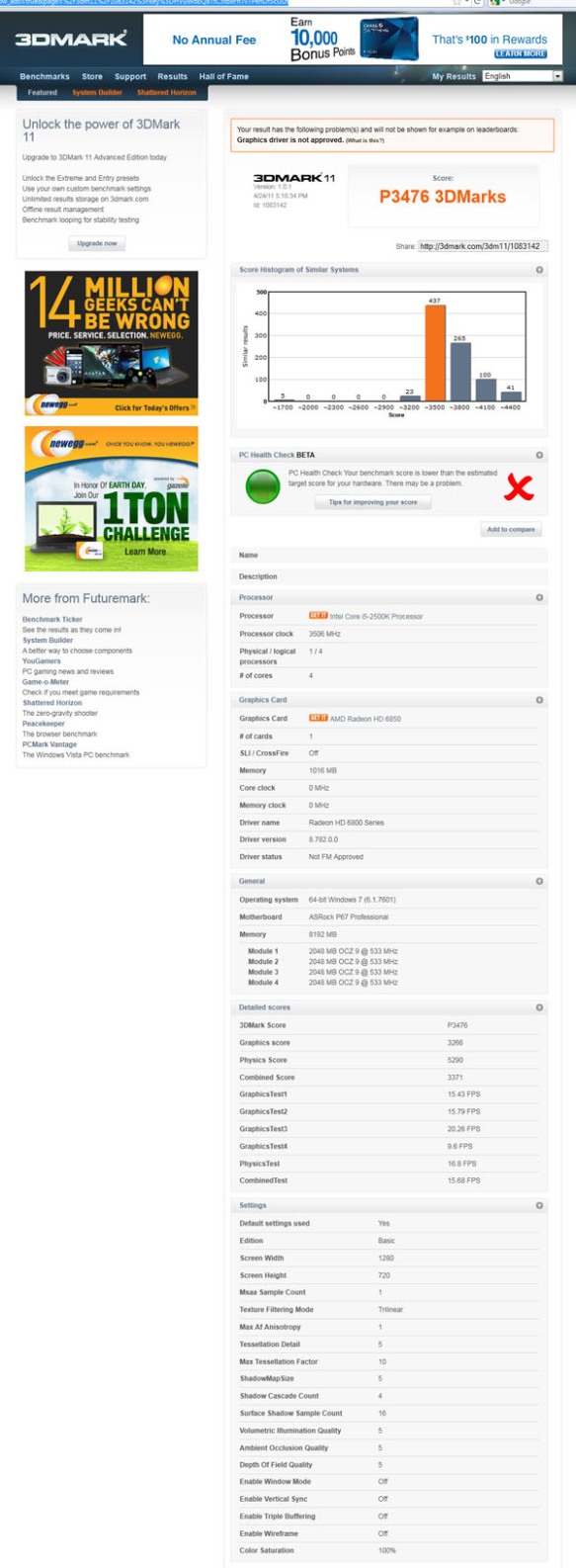
Fatal1ty P67 Win7 64 bit drivers HD6850 - 3dMark11 = P3476 / 3533
The disclaimer:
NONE of the parts used in this test were given to me as payment for this review.
NONE of these companies mentioned in this article paid me for the mention of their products or brands.
The only thing I got as compensation for this article – was my cat getting sick and barfing on my new shoes. Damn!!! Yuck!!!!



